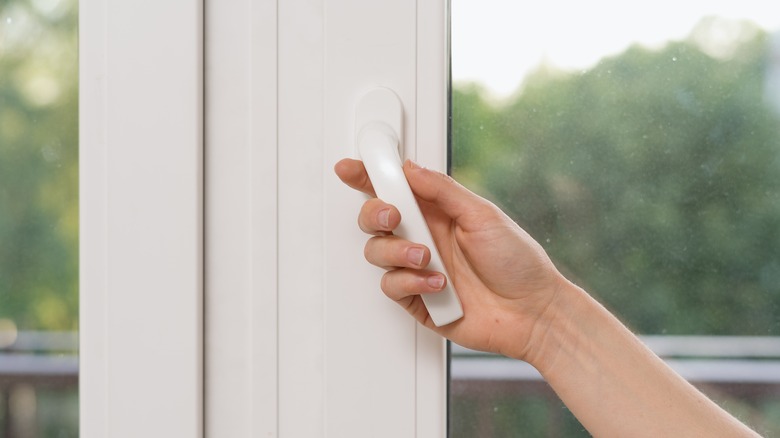Are Casement Windows More Energy Efficient?
As rising fuel costs reach deeper and deeper into our pockets, energy efficiency is forefront in the minds of many homeowners. According to the U.S. Department of Energy, heat gained and lost through windows is responsible for 25% to 30% of home energy use. Therefore, the energy efficiency of your windows is a crucial factor in keeping your bills, and your carbon footprint, as low as possible.
Casement windows are a type of hinged window, according to Pella Windows & Doors Of Western Canada. A casement window is a window with a hinge on one side, (if the hinge is at the top, it is called an awning window, whilst a bottom-hinged window is known as a hopper window.) They usually open outwards and are fixed in place with a lever arm, plus a catch when closed.
There are many benefits to the casement window design — they can be opened for ventilation, unlike fixed windows, but they are also very secure. According to Thompson Creek, although no window is 100% secure — a burglar can usually break the glass if they are truly committed — casement windows cannot be opened from the outside. But, how does this secure design affect the energy efficiency of casement windows?
Are casement windows energy efficient?
According to Golden Windows, a window that cannot open is almost always more energy efficient than one that can. However, when it comes to energy-efficient windows that open, casement windows have the edge over many other window designs, explains Glass Doctor. Though some love the classic look sash windows provide, those windowpanes have to slide up and down without too much friction. This requires the frame to be a bit larger, and include a few more air gaps than a casement window. Although they are only a few millimeters wide, over the lifetime of your window a lot of energy can be lost through a few millimeters.
Casement windows lock securely in place with the hinges and cranks leveraging against the window frame to minimize any potential leaks. Along with a tight seal, there are other additional features that can be added to your casement windows to make them even more energy efficient, according to Brock Doors & Windows. Additional panes of glass add layers of protection between the interior and exterior, whilst windows filled with an inert gas such as Argon or Krypton interrupt temperature transfer across the two surfaces of the glass.

